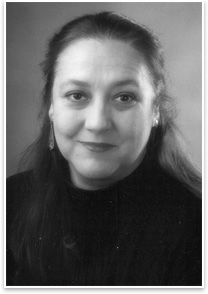
 Laura Montllor, AIA Laura Montllor, AIA
Summary: Laura Montllor, AIA, is a principal of Montllor Box Architects in Port Washington, N.Y., and executive director of Home Free Home (HFH), a national nonprofit organization dedicated to providing pro bono architectural design services to people who need to remodel their homes to accommodate a disability. Montllor also is a member of the Small Project Practitioners Knowledge Community Advisory Group. Education Professional background Favorite place Currently reading The beginning of Home Free Home My firm is about 2.5 people, so we are the average-sized architecture office in the U.S. Most small firms occasionally get asked to do pro bono work. I’ve been in practice for 20 years and during that time, three or four people have asked me to work for free remodeling a house so that people could have accessibility. One project I did quite a few years ago was for a young man who had been in a car accident just after he and his wife had a baby—he was very suddenly paralyzed from the waist down. They had just bought a house and it was completely inaccessible, like most houses in the U.S. and certainly most houses in our area on Long Island. They’re older homes and usually have two, three, or four steps before you can even get into the house. A small office is not like a law firm with 200 people, where you can take the pro bono work and hand it off to somebody else. Because most practices are very small, the pro bono work really does become a financial burden on the office. HFH is trying to streamline that entire experience so the architect can actually spend volunteer time doing the design work. The organization will be doing all of the other parts of the process. We’re centralizing and integrating what already exists in a scattered way. Through the Web site, disabled clients will be matched up with local volunteer teams of architects and university students. They then meet with the client, create the schematic design and do the construction drawings for small-scale projects, which are what we’re going to focus on things like ramps, accessible bathrooms, and accessible kitchens. The intention of the organization isn’t to go in and design brand new houses for people. It really is about residential renovation for accessibility and HFH is an all-volunteer organization. Funding the projects For others who don’t qualify for funding assistance, HFH will act as a referral service. We’ll give construction costs to people who fall in the mid-range and ask how much they can put in. Then, HFH will go with our drawings and meet with these people at their local level with their churches, synagogues, Lions Club, or whatever else and help the local community raise the rest of the money. People will get inspired when they actually see the real drawings. That’s what I see the majority of our work doing, assisting this majority of middle class people who have no help. The pilot project A growing need We’ve had a couple of articles in Newsday, and from that we’ve also had a tremendous instantaneous response. We had one tiny article (about 1/16th of a page), and some 120 people responded, asking for work to be done on their houses. More than 100 people called because there are so many people who are living in situations in which a simple thing of redesigning the bathroom—taking out the tub, and putting in a roll-in shower—would change their lives completely. How many volunteer architects are already helping? Benefit of HFH for architects I don’t think architects need a lot of encouragement to do this, because I think architects are basically altruistic people. They just need to understand that this is going to make it easy for them to do pro bono work and that they’re not getting involved in volunteering for a huge, unlimited time effort project. |
||
Copyright 2008 The American Institute of Architects. All rights reserved. Home Page |
||
news headlines
practice
business
design
recent related
› AIAS Freedom by Design: Students Making a Difference
› Paralyzed Veterans of America Honors Chicago-based Access Living for Accessible Design
› Unique Partnership Produces Nation’s First Affordable, Universal-Design Apartment Complex
› Pro Bono Services Add New Dimension to Professional Practice
If you would like to donate your professional services or money to Home Free Home, please visit their Web site.
